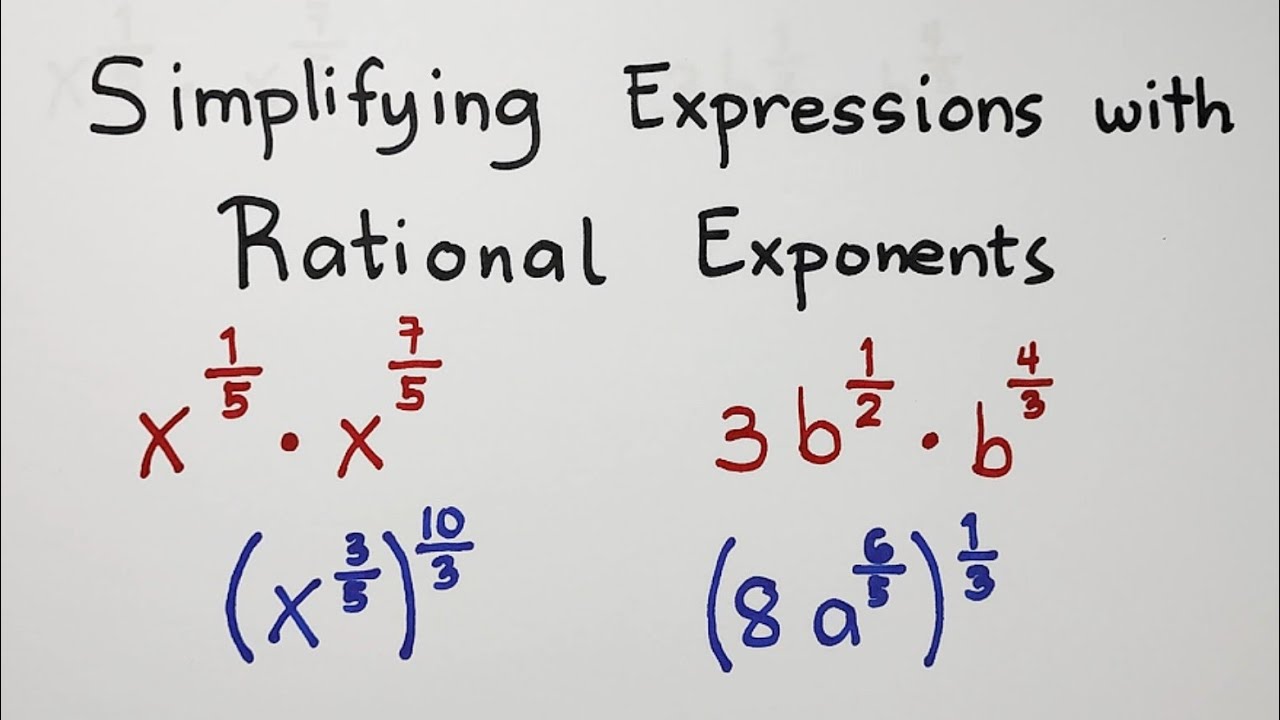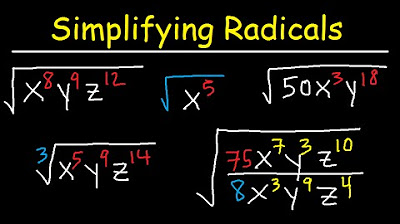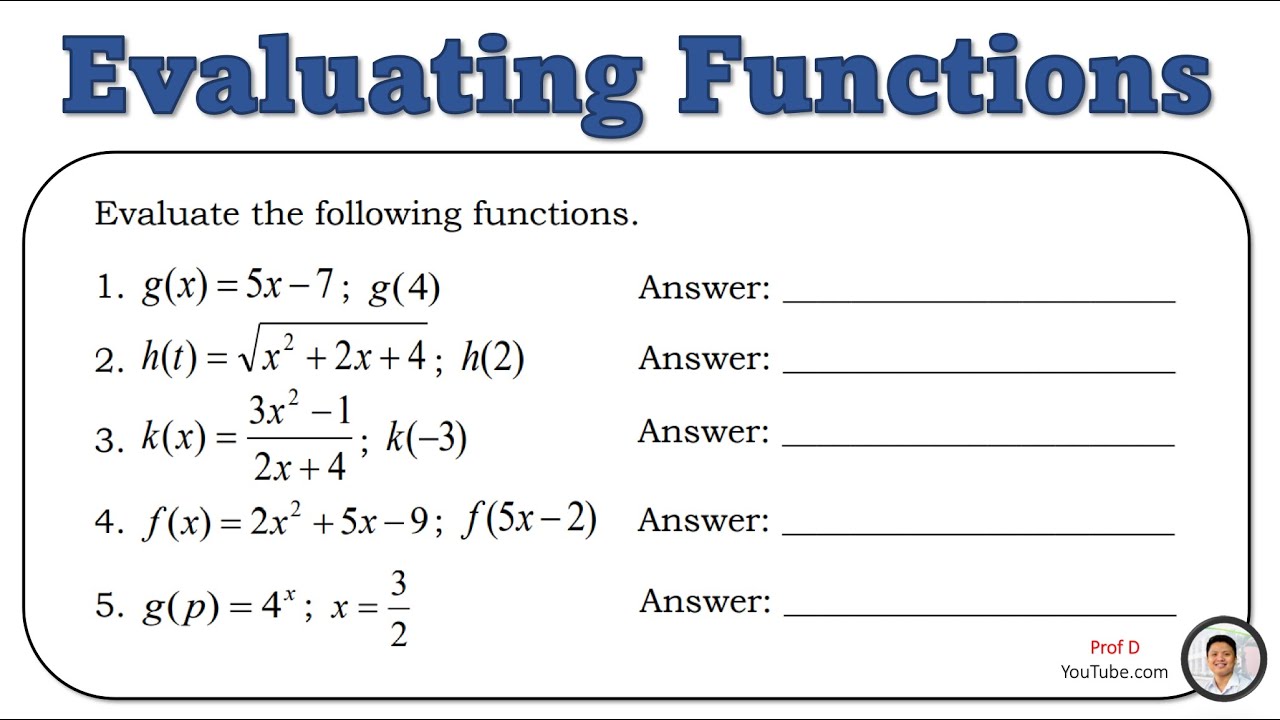Adding and Subtracting Rational Expressions With The Same Denominators
Summary
TLDRThis video tutorial offers a clear guide on simplifying rational expressions, especially when dealing with like denominators. It demonstrates the process through several examples, starting with combining fractions with a common denominator and simplifying them by finding a common factor. The video also covers more complex cases, such as subtracting fractions with the same denominator and simplifying expressions with unlike terms, emphasizing the importance of distributing negative signs and identifying the greatest common factor for simplification. The examples provided are practical and illustrate the step-by-step approach to solving such problems, making the content accessible and informative for viewers.
Takeaways
- 📚 Simplifying rational expressions involves combining fractions with like denominators into a single fraction.
- 🔍 When adding or subtracting fractions with the same denominator, the numerators are combined while the denominator remains the same.
- 📝 Example provided: (3x/5) + (4x + 7/5) simplifies to (7x + 7)/5, which further simplifies to (x + 1) after factoring out the greatest common factor (GCF).
- 🧩 The GCF can be factored out from the numerator to simplify the expression further, if applicable.
- ➖ Subtracting fractions with the same denominator involves combining the numerators while keeping the denominator constant, as shown in the example (7/x) - (11/x).
- 🔢 Negative results in the numerator, such as in the subtraction example, lead to a simplified expression with a negative numerator over the common denominator.
- 📐 The process of combining like terms is crucial when simplifying complex rational expressions, as demonstrated in the third example.
- 👉 It's important to distribute the negative sign correctly when combining terms with different signs, as in the fourth example with (3x - 10) - (5x - 12) over (x - 1).
- ✂️ Simplification may involve canceling out common factors in the numerator and denominator, which can lead to a more simplified form.
- 📉 Negative signs in the numerator and denominator can sometimes cancel each other out, resulting in a positive value, as in the final example.
- 🎯 The final answer in the last example is simplified to -2, demonstrating the importance of careful handling of signs and terms during simplification.
Q & A
What is the main topic of the video?
-The main topic of the video is simplifying rational expressions when adding or subtracting fractions with like denominators.
What is the first example given in the video for simplifying rational expressions?
-The first example is simplifying the expression 3x/5 + (4x + 7)/5.
How are the two fractions in the first example combined?
-The two fractions are combined by adding the numerators since they share the same denominator, resulting in (3x + 4x + 7)/5.
What is the greatest common factor (GCF) of the numerator in the first example, and how is it used?
-The GCF of the numerator 7x + 7 is 7, which is factored out, simplifying the expression to x + 1 over 5.
What is the second example presented in the video, and what is the result?
-The second example is 7/x - 11/x, which simplifies to -4/x after combining the fractions.
How does the video handle the third example with the expression (7x + 4)/(x + 2) + (5x - 7)/(x + 2)?
-The video combines the numerators and simplifies the expression to 4x - 1 over x + 2.
What is the fourth example in the video, and what is the final simplified result?
-The fourth example is (3x - 10)/(x - 1) - (5x - 12)/(x - 1), which simplifies to -2 after canceling out the common denominator.
What is the significance of the negative sign in the fourth example, and how does it affect the simplification process?
-The negative sign in the fourth example applies to both the 5x and -12, turning the expression into (3x - 5x - 10 + 12)/(x - 1), which simplifies to -2x + 2 over x - 1.
How does the video suggest simplifying the expression (3x - 10)/(x - 1) - (5x - 12)/(x - 1)?
-The video suggests combining the numerators with the negative sign distributed, resulting in -2x + 2 over x - 1, and then canceling out the common denominator x - 1 to get -2.
What is the common denominator in the fourth example, and why can it be canceled out?
-The common denominator in the fourth example is (x - 1), and it can be canceled out because it appears in both the numerator and the denominator, simplifying the expression to -2.
What is the key takeaway from the video regarding the simplification of rational expressions?
-The key takeaway is that when adding or subtracting rational expressions with like denominators, you can combine the numerators and then simplify the result by factoring out the greatest common factor and canceling out common factors in the numerator and denominator.
Outlines

此内容仅限付费用户访问。 请升级后访问。
立即升级Mindmap

此内容仅限付费用户访问。 请升级后访问。
立即升级Keywords

此内容仅限付费用户访问。 请升级后访问。
立即升级Highlights

此内容仅限付费用户访问。 请升级后访问。
立即升级Transcripts

此内容仅限付费用户访问。 请升级后访问。
立即升级浏览更多相关视频

How to Simplify Expressions with Rational Exponents? Grade 9 Math - Second Quarter

Adding and Subtracting Rational Expressions With Unlike Denominators

EQUATIONS IN QUADRATIC FORM || GRADE 9 MATHEMATICS Q1

Adding and Subtracting Rational Algebraic Expressions Part 2 - Grade 8 Mathematics

Simplifying Radicals With Variables, Exponents, Fractions, Cube Roots - Algebra

Grade 11 | Evaluating Functions | General Mathematics
5.0 / 5 (0 votes)
